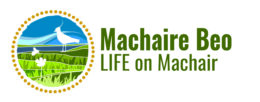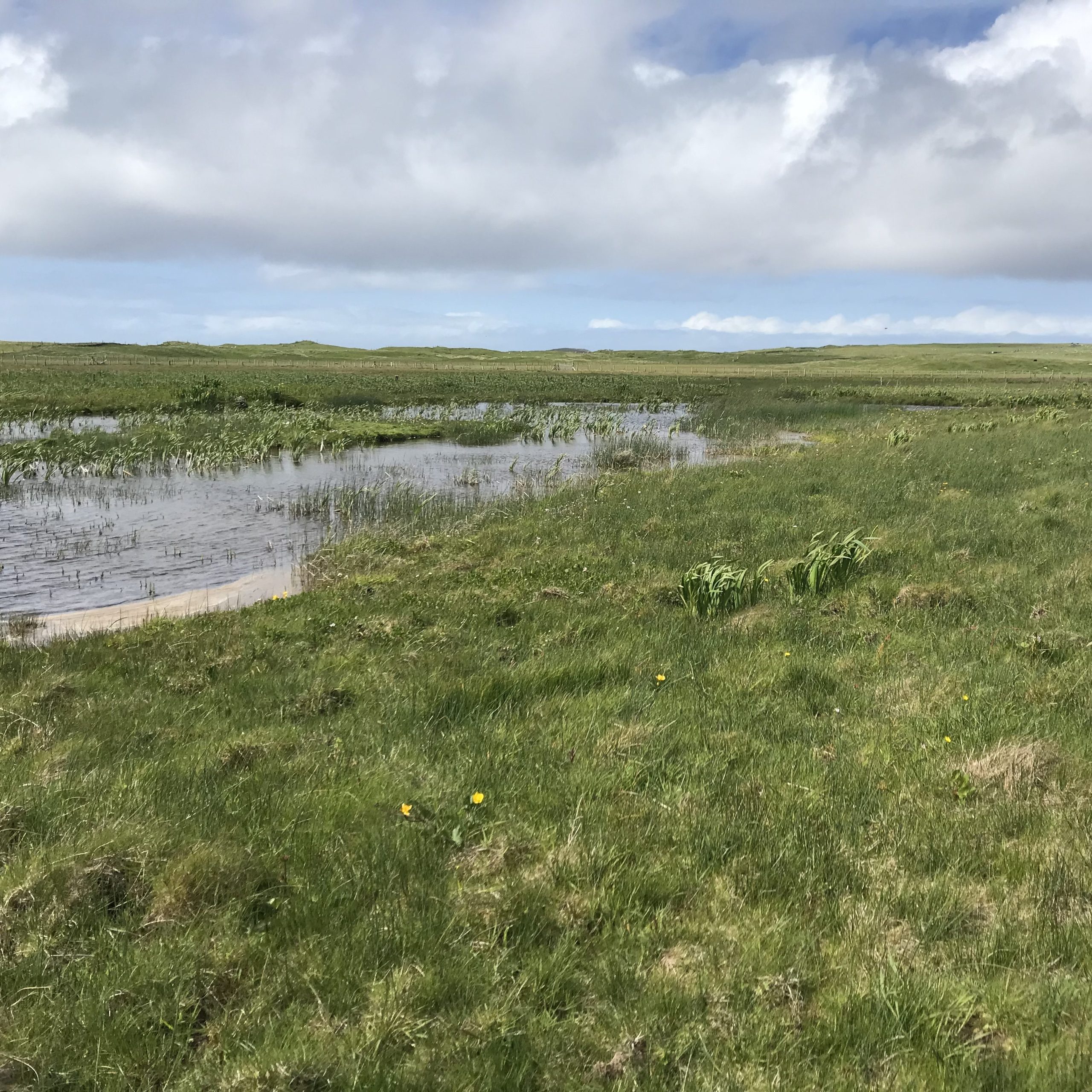The Mullet Peninsula (part of the Mullet/Blacksod Bay Complex SAC, including Termoncarragh Lake and Annagh Machair SPA, and overlapping with part of the Blacksod Bay/Broad Haven SPA and the Mullet Peninsula SPA).
This large coastal site, located in north-west Co. Mayo, comprises much of the Mullet Peninsula, the sheltered waters of Blacksod Bay and the low-lying sandy coastline from Belmullet to Doohoma. The character of the site is strongly influenced by the Atlantic Ocean and the exposure results in a terrestrial landscape dominated by blown sand and largely devoid of trees.
Fixed dunes have an extensive distribution throughout the site and are particularly well developed in the middle and south of the Mullet peninsula, e.g. at Emlybeg, Newtown and Agleam, with patches of fragmented Machair grassland throughout. There is a notable hilly Machair at the south end of the peninsula at Fal Mor.
The Mullet peninsula has three main areas of importance for breeding waders, which are, from north to south: Termoncarragh Lough (including Annagh Marsh), Cross Lough, and Leam Lough. Breeding wader populations on the peninsula declined from a peak of 66 pairs in 1985, to just 13 pairs in 2009. Populations have, however, recovered to a total of 39 pairs in 2019. Termoncarragh Lough always supported the majority of these pairs and remains the most important area within the site, largely due to the actions undertaken during a previous EU LIFE Nature project (LIFE00 NAT/IRL/007128).
In 2019, the Mullet peninsula supported a total of 21 pairs of breeding Lapwing, 4% of the national breeding Lapwing population in Ireland, all of which were found within Termoncarragh Lough (mainly in an area fenced by BirdWatch Ireland). Termoncarragh Lough is also one of the few areas in Ireland to support breeding Red-necked Phalarope, an Annex I species.
The Mullet Peninsula offers a large area of flower rich grassland however, parts of the site are persistently grazed in summer and have been reseeded with agricultural grasses. As a result they are failing to provide resources to these pollinating species. Nonetheless, the areas has the healthiest population of the Great Yellow Bumblebee in Ireland. Pollinator species recorded from this site and their status on Ireland’s Red List of species include:
Near Threatened: Large Red Tailed Bumble Bee (Bombus lapidarius), Moss Carder-bee (Bombus muscorum)**
Vulnerable: Field Cuckoo Bee (Bombus campestris), Red-tailed Carder Bee (Bombus ruderarius), Northern Colletes (Colletes floralis)**, Dark Green Fritillary (Argynnis aglaja)
Endangered: Barbut’s Cuckoo Bee (Bombus barbutellus), Great Yellow Bumble Bee (Bombus distinguendus)**, Hill Cuckoo Bee (Bombus rupestris), Wall Brown (Lasiommata megera)
Critically Endangered: Portland Moth (Actebia praecox)
** listed as vulnerable at a European level.

